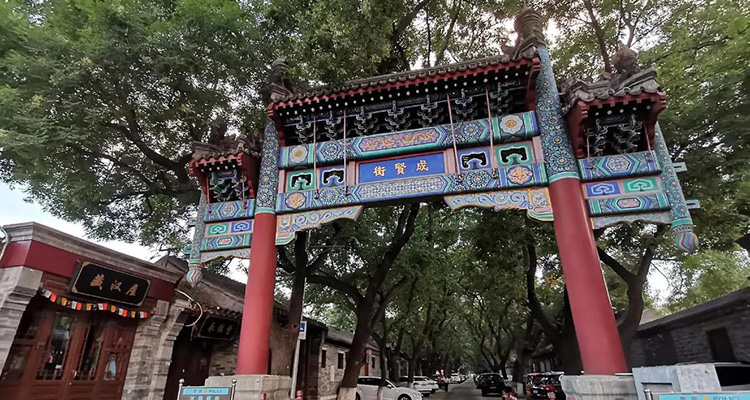Guozijian Street: 700 Years of Beijing Culture
1. First Impressions: Where Tradition Meets Modern Life
Guozijian Street, tucked away in Beijing’s Dongcheng District, is a perfect mix of history and modern flair. Once home to China’s highest imperial academy, it’s now a lively spot where culture, creativity, and city life collide. Walking here, you’ll see red walls, yellow tiles, and ancient architecture alongside stylish cafés, design shops, and traditional Beijing snacks.
The street, also known as “Chengxian Street,” carries the idea that students who walk here can become “wise people.” It’s a historic yet trendy destination that truly captures the heart of Beijing.

2. Deep Dive: History and Cultural Significance
Guozijian Street has over 700 years of history. The Confucius Temple and the Guozijian Museum date back to the 14th century, surviving through the Yuan, Ming, and Qing dynasties. The Guozijian, also called “Taixue” or “National Academy,” was the pinnacle of ancient Chinese education.
The Confucius Temple was the royal site for honoring Confucius, creating a unique “left temple, right academy” layout. This historical depth gives visitors a sense of walking through Beijing’s scholarly past while enjoying the modern touches that now thrive along the street.

3. What to See, Eat, and Experience
Shopping Highlights:
- Original designer furniture at Fanji Living Room (41 Guozijian Street)
- Traditional Beijing snacks like Lvdagun at street stalls (14 Guozijian Street)
- Creative souvenirs from the Confucius Temple and Guozijian Museum (e.g., “Duzhan’ao Tou” ice cream)
Food & Drink:
- Try Lvdagun, freshly made, soft, and sweet
- Sanyuan Meiyuan for yogurt and sour plum drinks
- Wuyutai Ice Cream, a Beijing classic
Restaurants:
- Jing Zhaoyin, fine vegetarian dishes near Yonghegong
- Qi Xun Ba Zhao Hutong Cuisine, traditional Beijing home-style meals
Activities & Experiences:
- Tour the Confucius Temple and Guozijian Museum to learn about ancient civil service exams
- City walks through historic hutongs to soak in the local lifestyle
- Join the Confucius Temple & Guozijian Cultural Festival for a mix of tradition and modern culture
- Practice traditional Baduanjin exercises under century-old trees
Photo Opportunities:
- Street archway at Guozijian Street, famous for four preserved paifangs (inscribed “Chengxian Street”)
- Red walls, yellow tiles, and ancient trees inside the temple and museum
- Biyong Hall, the central building of Guozijian, showcasing classic Chinese architecture
- Tree-lined streets in autumn, perfect for photos

4. Practical Travel Tips
Location:
In Dongcheng District, north of Yonghegong, south connects to Wudaoying Hutong
Transportation:
- Subway: Line 2 or 5, get off at Yonghegong Station, exit F or Southeast, walk east along Guozijian Street
- Bus: Stop at Yonghegong or Guozijian Station
- Map Apps: Gaode Maps or Baidu Maps work well
Best Time to Visit:
Spring and autumn; weekdays in the morning are quieter
Plan around the Confucius Temple & Guozijian Cultural Festival for a special experience
Estimated Visit Duration:
- Casual stroll: 1–2 hours
- Deep visit including museum and shops: half-day

5. Cultural Tips & Etiquette
- Payment: Most shops accept Alipay and WeChat Pay; some small stores or museum tickets may need cash
- Haggling: Politely try at street stalls and handicraft shops; do not haggle in restaurants or official stores
- Etiquette: Keep your voice down in the temple and museum; respect the educational heritage
- Clothing: Comfortable shoes are a must for walking
Useful Phrases in Chinese:
- Hello: Nǐ hǎo
- Thank you: Xiè xie
- How much?: Duō shao qián
Most main attractions and shops have English-speaking staff, especially younger-run stores.

Conclusion: A Living Cultural Experience
Every brick and tile on Guozijian Street tells a 700-year-old story of education, while every small shop radiates contemporary Beijing creativity. This short but vibrant hutong allows you to connect with China’s ancient culture and experience authentic Beijing life. Guozijian Street is not just a historical corridor—it’s a perfect city walk and a gateway through time.


